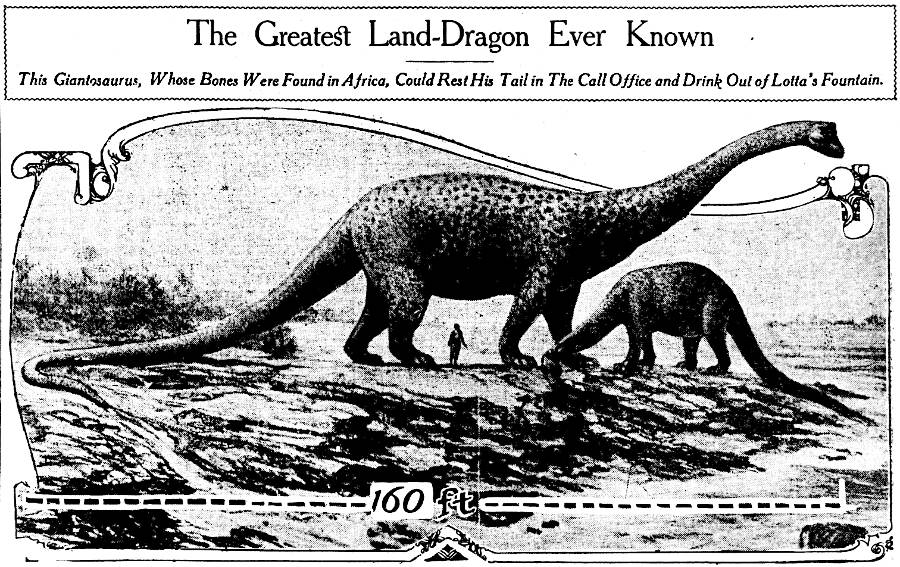From the The San Francisco Call., September 25, 1913
HERE is an astonishing picture of the reconstructed Gigantosaurus Africanus, the most prodigious creature that has come to light. Our special artist has now reconstructed the great land dragon and has set it by a man and Diplodocus Carnegii, to emphasize its enormous size. Recent discoveries have revealed in Africa remains of a land dragon whose length measured some 160 feet, or about the distance from The Call office across Market street to Lotta’s fountain. The monster was discovered by German savants at Tendaguru, in German East Africa. An almost complete skeleton was obtained. The cast of the upper arm bone, or humerus, now at the British Museum of Natural History, South Kensigton, and descriptions of the rest of the skeleton show that this colossal beast was a near relation of Diplodocus Carnegii, in Pittsburgh. Now, Diplodocus was just 84 feet long and stood 11 feet high at the shoulder. His arm bone measured just 3 feet 3 inches long. The arm bone of the new giant, Gigantosaurus Africanus, was as long as the whole leg of Diplodocus; it measures now just 7 feet 1 inch, but during life it was certainly some inches longer, for no allowance has been made for the gristle which must have capped both ends. It may be that Gigantosaurus may lose something of his glory, at any rate as far as his length is concerned, for it is assumed that he was a long tailed dragon, like his American cousin. He may not have been. In height Diplodocus was nowhere; his 11 feet at the shoulder is far eclipsed by the 22 feet of his rival. Naturally, it is difficult, not to say dangerous, to dogmatize on the theme of the habits of Gigantosaurus. 11c lived during that remote period of the world’s history during which the lower cretaceous rocks were formed; a period which antedated the birth of man by several million years. We shall probably be not far from the truth in regarding him as an aquatic, or. at any rate, an amphibious creature. That he was a vegetarian is shown by his teeth, and that he was dull witted is proved by the ridiculously small size of his brain cavity, less than would hold a man’s fist. A man is placed in the drawing (under Gigantosaurus Africanus) merely for the comparison of size.